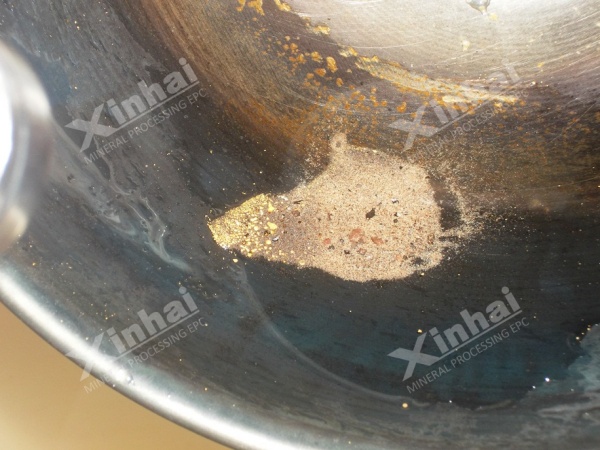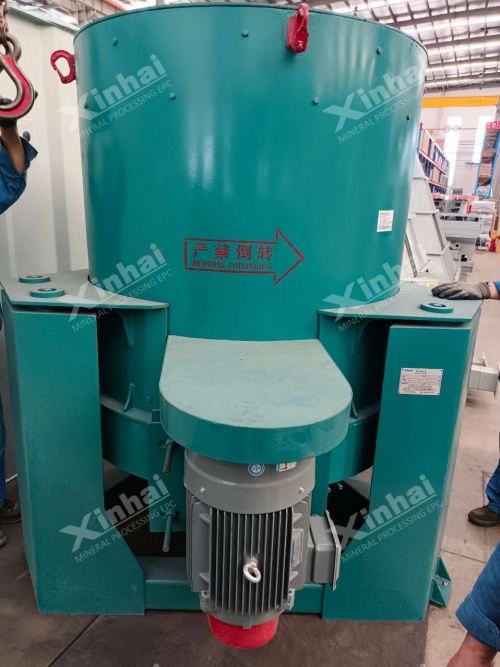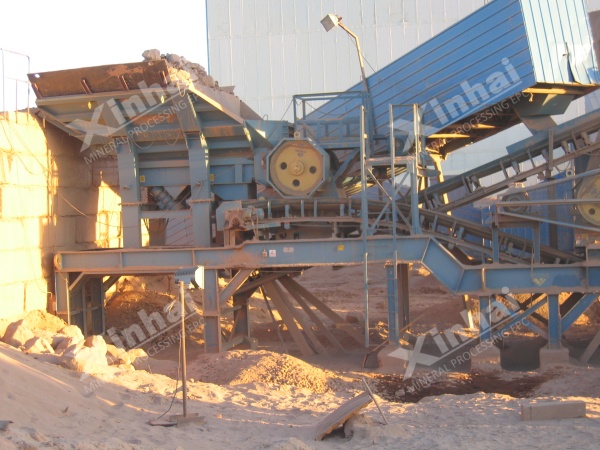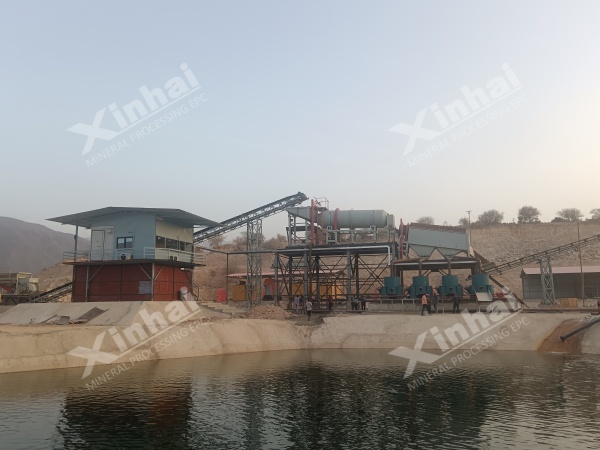If you want to know more information (such as product/process price, etc.), please contact us 24-hour telephone
In the process of placer gold mining and processing, fine gold (particles smaller than 0.25 mm) and flake gold are difficult to recover and are therefore classified as refractory gold in alluvial systems. Due to their extremely small particle size, these gold particles cannot be effectively captured by traditional gravity separation equipment. As a result, fine gold is often lost during processing, leading to resource wastage and reduced economic returns.
So, how can fine gold be effectively recovered from placer deposits? This article will provide the answer.

In traditional placer gold extraction methods, gold sluice boxes and jigs are commonly used as gold recovery equipment. However, for fine-grained gold, these two types of equipment cannot achieve effective recovery. The main problems are as follows:
Gold sluice box: The working principle of a sluice box is to utilize water flow scouring and gravity sedimentation. Fine-grained gold and flake gold are low in weight and are easily carried away by flowing water. According to statistics, even under optimal working conditions, the loss rate of fine gold (<0.2 mm) can be as high as 25%–54%.
Jig: The jigging method results in approximately 25% loss when recovering -0.25 mm to +0.1 mm gold particles, and the loss rate for finer gold (<0.1 mm) can reach up to 40%. Its operation is complex, affected by many variables, and its applicability in placer gold mines is limited.
Summary: The fundamental reason for the loss of fine-grained gold lies in its low mass, large specific surface area, and difficulty settling. Additionally, due to their shape, flake gold particles tend to float along with water flow, and equipment such as sluice boxes and jigs cannot generate a sufficiently strong force field to effectively capture them.

Traditional equipment lacks a sufficiently strong force field, leading to gold losses—so is there a device that can generate high enough centrifugal force? The answer is yes: the centrifugal concentrator.
Its core advantages include:
Ultra-strong centrifugal force field: Generates a force tens to hundreds of times greater than gravity, greatly accelerating the sedimentation of fine gold particles.
Key “bed loosening” technology: High-pressure water is injected into the rotating enrichment bowl through cone wall nozzles to keep the mineral bed in a “fluidized” state. This allows fine gold to pass through the gangue layer and settle smoothly into the concentrate zone.
Efficient continuous/semi-continuous discharge: After enrichment, the concentrate is discharged automatically or manually. The operation is simple and reliable.
Compared with gold sluice boxes, centrifugal concentrators significantly improve gold recovery across all particle sizes. Specifically:
·Recovery of -0.5 mm to +0.25 mm gold increases by 35%
·Recovery of -0.25 mm to +0.1 mm gold increases by 50%
·Recovery of <0.1 mm gold increases by 60%

Process 1: Combined Recovery of Rough Concentrate Tailings
Application: Suitable for easily to moderately difficult ore sands. In such cases, most fine gold is lost in the tailings from the deep-pit sluice box. During operation, attention must be paid to preventing the loss of coarse gold particles on the screen. This process requires a relatively high installation height for equipment.
Process Flow: After rough concentration by the sluice box, the tailings are directly fed into the centrifugal concentrator to recover fine gold.
Advantages:
·Simple transformation of traditional placer gold concentrators
·Low water and power consumption
·Operates independently from the main process
Successful Case: After applying this combined process, the centrifugal concentrator contributed 70% of the total recovered gold, among which fine gold particles (<0.1 mm) accounted for 45%.
Process 2: Centrifugal Concentrator + Sluice Box Combined Separation
Application: Suitable for medium to difficult-to-wash ore sands, with high clay content (up to 12%) and a high proportion of fine gold.
Process Flow:
The ore is first washed using a rotary drum scrubber, then fed into a sluice box to recover gold. After that, vibrating screens and hydrocyclones are used for classification and desliming, followed by centrifugal concentration to recover residual gold.
Advantages:
·Accurate particle classification
·High gold recovery rate
Successful Case:
This process was applied to a clay-type tailing, achieving a total recovery rate of 94.2%. The centrifugal concentrator played a key role in recovering fine gold <0.2 mm.

Process 3: Classification-Based Separation (Independent Coarse/Fine Treatment)
Application: Suitable for easy-to-process artificial placer or placer gold with high fine gold content. Not suitable for ore with excessive clay content, as vibrating screens are inefficient at breaking up clay.
Process Flow:
The placer gold ore is classified using a vibrating screen. Oversized (coarse) material is treated in the sluice box, while undersized (fine) material is processed with a centrifugal concentrator.
Advantages:
·Low water and power consumption
·Targeted recovery
·High recovery rate of fine gold
Process 4: Multi-Stage Sorting with Separate Selection
Application: Suitable for all types of placer deposits, especially those with extremely high fine gold content. While this method requires higher investment and operational complexity, it provides excellent adaptability.
Process Flow:
The ore is washed in two stages using rotary scrubbers, followed by fine grading via two-stage hydrocyclones. Different particle sizes are then separately processed using sluice boxes and centrifugal concentrators.
Advantages:
·Precise classification
·Low water and power consumption
·High recovery rate across all particle sizes

4. How to Choose the Right Placer Gold Beneficiation Solution
Under the current challenging economic conditions, selecting the most suitable beneficiation process is crucial. When determining the optimal placer gold processing solution, the following factors should be considered:
Ore Sand Characteristics: The mineral properties of placer gold ore are critical. Key considerations include clay content, gold occurrence state, and ore grade.
Gold Particle Size Distribution: Focus primarily on the proportion of fine gold smaller than 0.25 mm.
Ore Washability: The washability of the ore directly affects the selection of pretreatment equipment, as well as water and power consumption.
Investment and Operating Costs: These include equipment procurement, water and electricity usage, and maintenance costs.
Process Selection Guide (Based on Ore Type and Fine Gold Content)
·For easily washable artificial placer ore with fine gold content ≥ 20%, Process 1 and Process 2 are preferred.
·For medium-difficulty artificial placer ore with fine gold content ≥ 30%, Process 1 / 2 / 3 are all applicable.
·For primary (natural) placer ore with fine gold content ≥ 10%, Process 1 / 2 / 4 are recommended.
Conclusion
Xinhai Mining has extensive experience in the beneficiation and processing of placer gold ores. For refractory placer ores with complex compositions and high fine gold content, we can develop customized process flows based on mineral processing tests to ensure that the gold recovery rate meets expectations.
If you have any needs related to placer gold processing, please feel free to contact us for professional support and solutions.